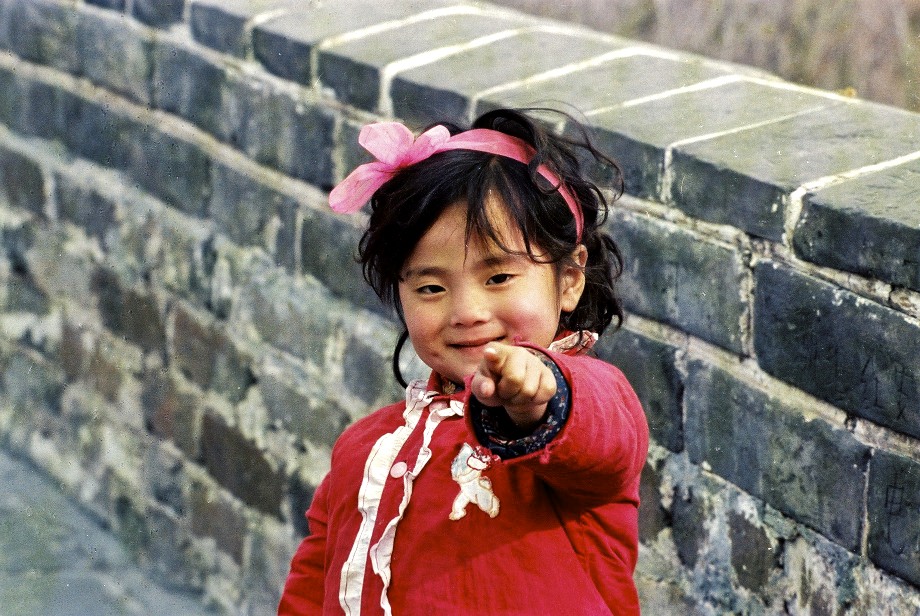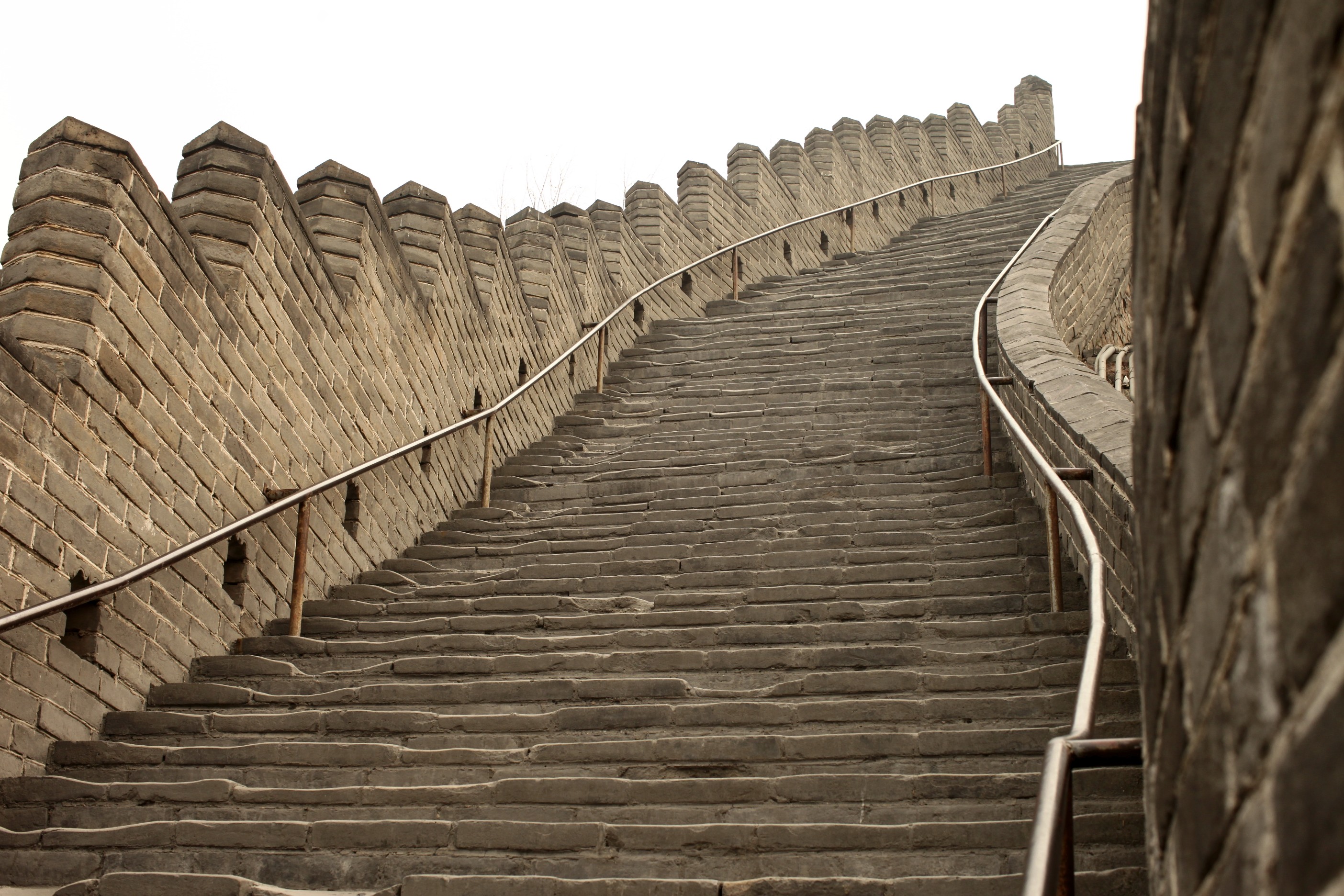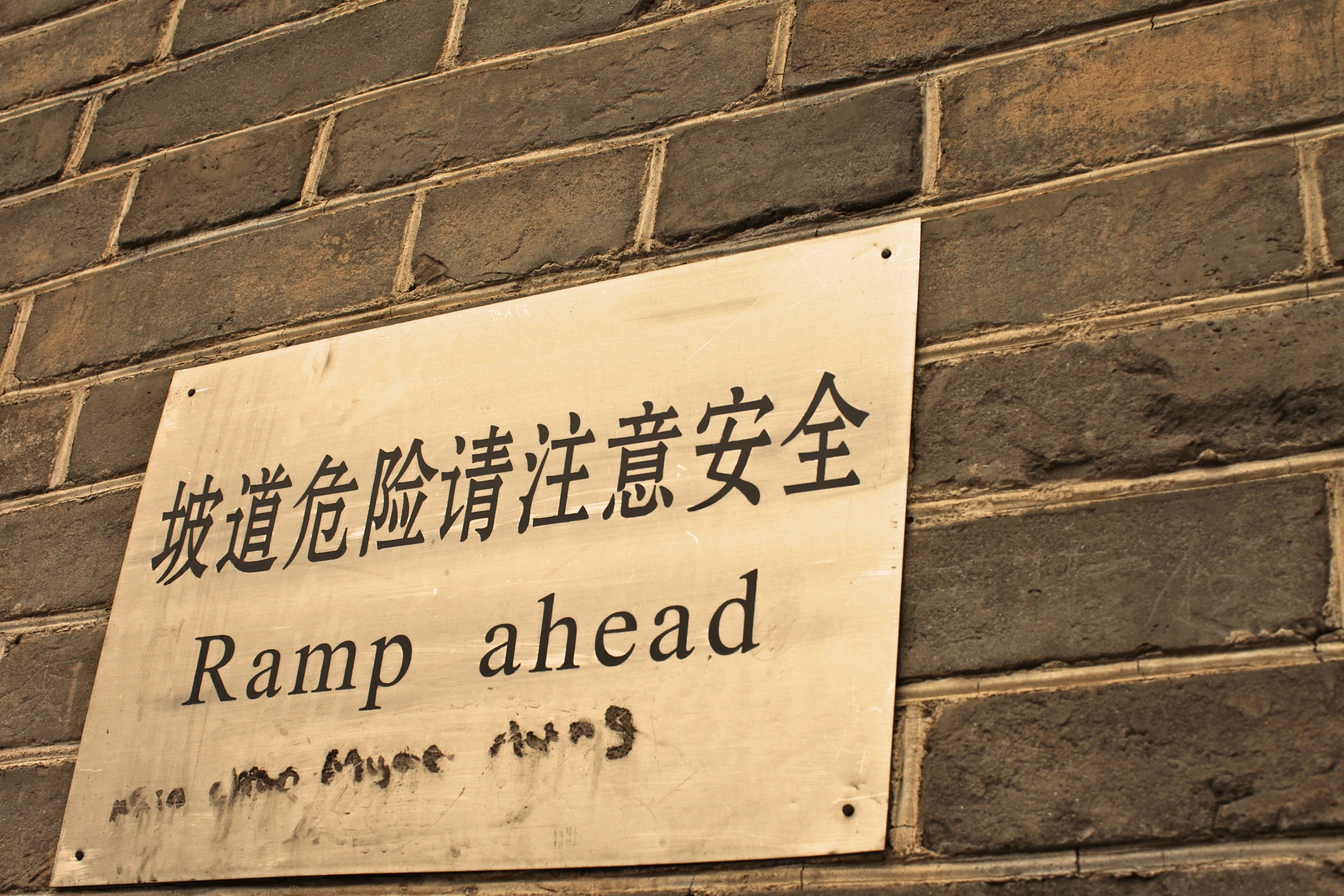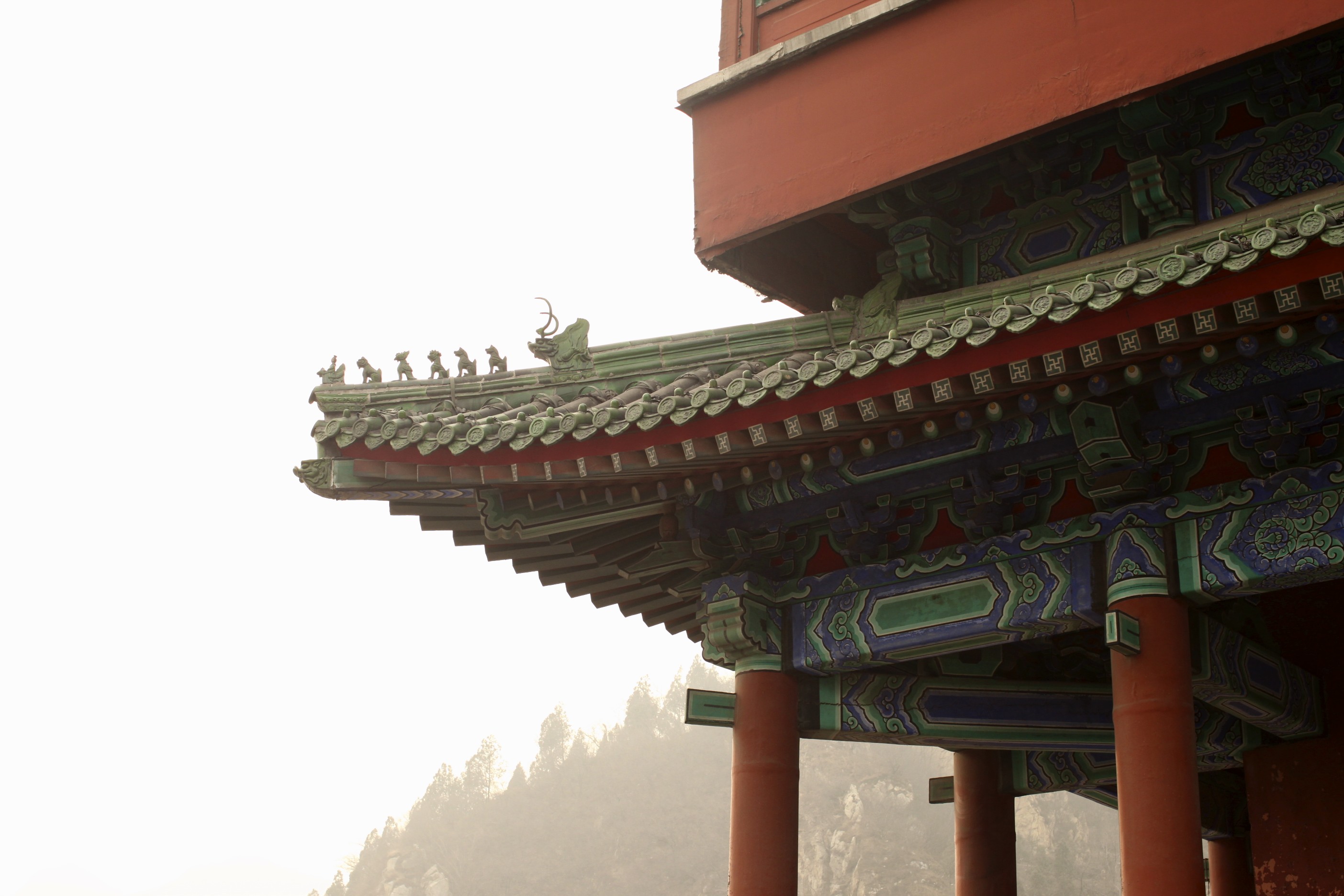” He who has not climbed the Great Wall is not a true man” said once Mao Zedong, I have climbed it twice. I guess that make me a true Woman.
It’s a misty morning in Beijing when I head to the Peninsula Hotel lobby to meet my guide , Annie to the Great Wall. Adivised to wear shoes with traction , dress warmly and bring waterproofs and plenty of water, I am rather unprepared, I am nevertheless excited to be making my second visit to this world heritage site that I have visited 32 years ago in a country where Coke and Internet were never heard about. ( The first few pictures in the post are from 30 years ago, hard to tell the difference between them and the next ones.
The Great Wall of China is a series of fortifications made of stone, brick, tamped earth, wood, and other materials, generally built along an east-to-west line across the historical northern borders of China in part to protect the Chinese Empire or its prototypical states against intrusions by various nomadic groups or military incursions by various warlike peoples or forces.
Several walls were being built as early as the 7th century BC these, later joined together and made bigger, stronger, and unified are now collectively referred to as the Great Wall. Especially famous is the wall built between 220–206 BC by the first Emperor of China, Qin Shi Huang. Little of that wall remains. Since then, the Great Wall has on and off been rebuilt, maintained, enhanced; the majority of the existing wall was reconstructed during the Ming Dynasty.
Other purposes of the Great Wall have included border controls, allowing the imposition of duties on goods transported along the Silk Road, regulation or encouragement of trade and the control of immigration and emigration. Furthermore, the defensive characteristics of the Great Wall were enhanced by the construction of watch towers, troop barracks, garrison stations, signaling capabilities through the means of smoke or fire, and the fact that the path of the Great Wall also served as a transportation corridor.
The Great Wall stretches from Shanhaiguan in the east, to Lop Lake in the west, along an arc that roughly delineates the southern edge of Inner Mongolia. A comprehensive archaeological survey, using advanced technologies, has concluded that the Ming walls measure 8,850 km.
This is made up of 6,259 km sections of actual wall, 359 km of trenches and 2,232 km f natural defensive barriers such as hills and rivers. Another archaeological survey found that the entire wall with all of its branches measure out to be 21,196 km .
This time I chose to visit the South East of Jinshanling, is the Mutianyu Great Wall which winds along lofty, cragged mountains from the southeast to the northwest for approximately 2.25 kilometers (about 1.3 miles). It is connected with Juyongguan Pass to the west and Gubeikou to the east.
Gubeiku at the border with Mongolia where apparently is less crowded. One and a half hours drive facing unpredictable Beijing traffic we finally reach our destination. At a large Oriental gateway a colorful crowd of young students coming out from a bus are starting a line to buy tickets. These look somehow the same from the ones in the pictures posted in my post except for last generation ski outfits and the I-Phone cameras. Our guide has already taken care of our tickets and without realizing, we are on our way to the great climbing.
32 years older, among same nosy squirrels running along the heavy stairs, the sky this time is harder to reach. This part of the wall is well restored .WatchTowers can be seen for miles in the distance as well as on adjacent hills, confirming the effectiveness of their fire signals. Whilst many envisage the Wall as one long unending structure, there are in fact varying sections and inner walls, built according to the lay of the land. However the Wall never cuts corners, following a path up and down over the hills and mountains, never shrinking at a step incline or bypassing a challenging landscape.
This is just part of what makes it so impressive in it’s execution . One cannot help but wander how it was constructed. Where did al the materials for its realization come from and how were they ferried out to the far reaches of it’s vast nation, up hills and down valleys to horizons that starch ever0further into the distance, where the Wall just continues on and on..
We reach the end of our walk after 3 hours. I am literally exhausted, but happy to have been able to register visually experiences that will fade away with time….., I am eager now to come back to my modern Beijing , lay in bed, download the images and play some I-ching to better understand and learn from the Masters where and how to build from solid foundation the construction of my own path.
Joelle’s Tips
Private Luxury tours to the Great Wall :
The Source: Wikipedia Rachell Duffelll for the Peninsula Magazine

























mg class=”aligncenter size-full wp-image-45835″ title=”IMG_2129″ src=”https://joellemagazine.com/wp-content/uploads/2012/07/IMG_21291.jpg” alt=”The Wild Wild Wall” width=”2714″ height=”1810″ />







